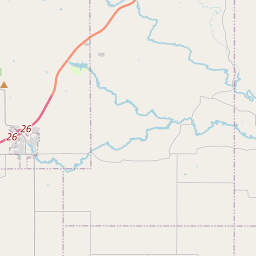Land, Lead, and Politics
Historical marker location:
Belmont, Wisconsin
( Marker is at the intersection of G and B (County Route B), on the right when traveling west on G.)







© OpenStreetMap contributors
In 1933, Wisconsin became the first state in the country to ratify the 21st Amendment, which ended Prohibition.
About Lafayette County
Lafayette County Timeline
Lafayette County, located in southwestern Wisconsin, has a rich history dating back to its early settlement by European immigrants in the 1820s. The area was originally inhabited by Native American tribes, including the Ho-Chunk Nation, who relied on the fertile soil and abundant water sources for sustenance. The first European settlers were primarily of German and Irish descent, drawn to the area for its agricultural potential.
The county was officially established in 1846 and named after the Marquis de Lafayette, a French aristocrat and military officer who played a crucial role in the American Revolution. Throughout its history, Lafayette County has been predominantly agricultural, with farming and livestock production being the backbone of the local economy. The landscape is characterized by rolling hills, lush valleys, and numerous streams, creating a picturesque rural setting.
During the mid-19th century, lead mining became a significant industry in Lafayette County, attracting miners from around the region. The discovery of lead deposits led to a period of growth and prosperity, with several mining boomtowns springing up across the county. However, by the late 19th century, the industry declined, partly due to depletion of resources and the emergence of more profitable mining operations elsewhere.
In the 20th century, Lafayette County experienced economic shifts, transitioning from traditional agriculture to a more diversified economy. Industries such as manufacturing, healthcare, and tourism have become increasingly important contributors to the county's prosperity. Today, Lafayette County retains its agricultural heritage while embracing modern developments, providing residents and visitors with a unique blend of scenic beauty, small-town charm, and economic opportunities.
The county was officially established in 1846 and named after the Marquis de Lafayette, a French aristocrat and military officer who played a crucial role in the American Revolution. Throughout its history, Lafayette County has been predominantly agricultural, with farming and livestock production being the backbone of the local economy. The landscape is characterized by rolling hills, lush valleys, and numerous streams, creating a picturesque rural setting.
During the mid-19th century, lead mining became a significant industry in Lafayette County, attracting miners from around the region. The discovery of lead deposits led to a period of growth and prosperity, with several mining boomtowns springing up across the county. However, by the late 19th century, the industry declined, partly due to depletion of resources and the emergence of more profitable mining operations elsewhere.
In the 20th century, Lafayette County experienced economic shifts, transitioning from traditional agriculture to a more diversified economy. Industries such as manufacturing, healthcare, and tourism have become increasingly important contributors to the county's prosperity. Today, Lafayette County retains its agricultural heritage while embracing modern developments, providing residents and visitors with a unique blend of scenic beauty, small-town charm, and economic opportunities.
Lafayette County Timeline
This timeline provides a condensed summary of the historical journey of Lafayette County, Wisconsin.
- 1829 - Lafayette County established by the Wisconsin territorial legislature.
- 1836 - The first white settler, Josiah Norris, arrives in the area.
- 1837 - Belmont, the county seat, is established.
- 1838 - The first school in the county is built in Wiota.
- 1842 - The county's first newspaper, the Lafayette Advertiser, is published.
- 1855 - The Milwaukee and Mississippi Railroad reaches the county, promoting economic growth.
- 1860 - The population of Lafayette County reaches over 12,000.
- 1861-1865 - Many residents of Lafayette County serve in the Civil War.
- 1871 - The county's only courthouse in Belmont burns down.
- 1872 - Darlington becomes the new county seat.
- 1882 - The county's first electric lights are installed in Darlington.
- 1930s - The Great Depression causes significant economic hardship for the county.
- 1960s - The farming industry experiences modernization and consolidation.
- 1980s - Tourism becomes an increasingly important industry for Lafayette County.
- 2010 - The population of Lafayette County reaches over 16,000.